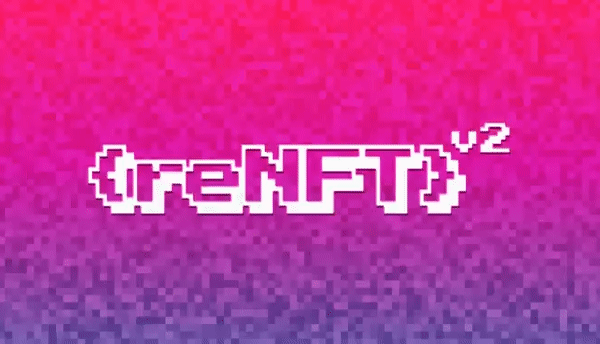
Metaversal is a Bankless newsletter for weekly level-ups on NFTs, virtual worlds, & collectibles
Dear Bankless Nation,
Earlier this week, I wrote about how some parts of the NFT ecosystem have been surging lately.
In that vein, the NFT lending sector is definitely one area that’s been getting red hot in recent weeks as more projects have come to the fore and more folks have started looking to capitalize on NFTs without selling them.
With the sector as young as it is, though, there are many people who are currently trying to wrap their heads around the basics and current makeup of the NFT lending landscape.
All that said, let’s check out the scene as it stands for today’s Metaversal!
-WMP
🙏 Sponsor: Rarible – discover & trade NFTs across multiple blockchains and communities✨
The NFT lending scene
The main types of NFT lending
Today, there are two main types of NFT lending efforts: NFT rental projects and NFT borrowing projects.
The first type lets users rent their NFTs out to others, e.g. if a borrower wants to temporarily gain access to a token-gated community. reNFT is one such team working in this field.


The second type, NFT borrowing projects, lets people collateralize their NFTs in order to borrow crypto against them. Below I’ll focus on these sorts of borrowing projects since they’re far more commonplace and in demand than rental projects are presently.
Why borrow against NFTs?
In many jurisdictions, selling an NFT (just like selling regular crypto) causes a taxable event. Yet borrowing against your assets, e.g. crypto or NFTs, produces non-taxable income in the U.S. for example. So by collateralizing a choice NFT and borrowing against it, a person can bring in liquidity without actually selling their NFT and triggering tax implications. Not bad, right.
Additionally, some people borrow against their NFTs in order to get more funds to buy more NFTs, i.e. leverage.
Driving the news: the NFTfi surge


The oldest and most popular NFT lending protocol is NFTfi, a peer-to-peer (P2P) NFT lending project where users directly lend and borrow from one another.

On NFTfi, lenders can earn interest by providing DAI or WETH loans, while borrowers can access liquidity by collateralizing allowlisted NFTs. A loan’s terms (duration, interest, etc.) are agreed upon by the counterparties, and the underlying NFT is surrendered to the lender if a default occurs. To date, NFTfi has facilitated over $170.5M worth of loans.
Other newer P2P NFT lending platforms
AbraNFT - an NFT borrowing project built by Abracadabra Money
Arcade - an NFT borrowing project built atop the Pawn Protocol, an NFT infrastructure system


Alternative NFT lending approaches
P2P lending isn’t the only way to facilitate NFT loans.
For example, NFT lending protocol JPEG’d has pioneered non-fungible debt positions, or NFDPs. These work like Maker Vaults, but instead of, say, you collateralizing ETH to borrow DAI stablecoins, NFDPs let you deposit an NFT like a CryptoPunk in order to borrow the JPEG’d PUSD stablecoin. Notably, the project uses Chainlink oracles to fetch and maintain the on-chain pricing of its NFT collateral.

Another NFT lending approach that’s seen a boom of activity lately is peer-to-pool model.
These sorts of projects entail lenders serving as liquidity providers (LPs) that provide ETH to liquidity pools, which borrowers can borrow from by first collateralizing NFTs. For instance, consider the case of BendDAO, a peer-to-pool lending project that accepts blue-chip NFTs like Azukis, Bored Apes, CryptoPunks, CloneX, Doodles, and Mutant Apes as its initial collateral types.
Other peer-to-pool projects to watch
DropsDAO - “instant loans for JPEG, NFT, and metaverse assets”
Fluid - “fair. instant. protected. NFT-backed loans”
Pine - “permissionless NFT-backed loans and NFT financing”
Comparing P2P vs. NFDPs vs peer-to-pool
The P2P, NFDP, and peer-to-pool NFT lending models have their respective pros and cons.
P2P Pros
Well suited for dealing with rarer NFTs since counterparties can customize terms that account for rare traits
Liquidation, or default, only occurs when a borrower fails to repay (rather than via falling floor prices, etc.)
Straightforward escrow format keeps smart contract logic simple
P2P Cons
Loans can take longer as it depends on finding willing lenders
Lending yields aren’t instant or constant but rather depend on loans being opted into
NFDP Pros
Leans on proven collateralized debt position (CDP) structuring
NFDP Cons
Falling floor prices can lead to under-collateralized debt positions and thus liquidations
Custom oracles not very battle-tested yet
Limited collateral choices for now
Peer-to-pool Pros
Borrowers can access loans instantly
Lenders can instantly earn yields on their ETH deposits
Peer-to-pool Cons
More complicated tokenomics
More complicated smart contract logic
Limited collateral choices or now
There’s more where that came from
The NFT lending scene has bloomed a lot since last year, and it looks like a lot more growth is coming in the near future. See the “Not Launched” projects below as of May 1st, 2022:

As such, expect lots more activity around NFT lending for the foreseeable future. Another thing to keep an eye out for is novel innovations like NFT credit scores that can pave the way to new sorts of NFT lending possibilities altogether!
Action steps
👛 While it’s a bit dated now, check out my June 2021 tactic How to get a loan on your NFT to get a basic feel for NFTfi
🔗 Read my article Inside Chainlink’s new CryptoPunk Oracle to learn more about JPEG’d
Author Bio
William M. Peaster is a professional writer and creator of Metaversal—a Bankless newsletter focused on the emergence of NFTs in the cryptoeconomy. He’s also recently been contributing content to Bankless, JPG, and beyond!
Subscribe to Bankless. $22 per mo. Includes archive access, Inner Circle & Badge.
🙏Thanks to our sponsor
RARIBLE
Rarible.com is a top multichain NFT marketplace underpinned by Rarible Protocol, the open source, community-governed NFT API that simplifies building community marketplaces and any other NFT projects and integrations.
💸 Connect up to 20 Ethereum, Polygon, Tezos, Flow wallets to your profile
🙋♀️ Place a floor bid on BAYC, BossBeauties, mfers, and other NFT collections
📲 Monitor and manage your NFT portfolio in Rarible mobile app (iOS, Android)
🔗 Start building on Rarible Protocol: no API key, no rate limit, your own node option
Not financial or tax advice. This newsletter is strictly educational and is not investment advice or a solicitation to buy or sell any assets or to make any financial decisions. This newsletter is not tax advice. Talk to your accountant. Do your own research.
Disclosure. From time-to-time I may add links in this newsletter to products I use. I may receive commission if you make a purchase through one of these links. Additionally, the Bankless writers hold crypto assets. See our investment disclosures here.


















Check out what @ZhartaFinance is doing!
These are ETH lending projects. What about Solana please?
As far as I know, there is @YawwwNFT, which offers P2P Lending, and has already done more than 4mil loans in the first month of launch.